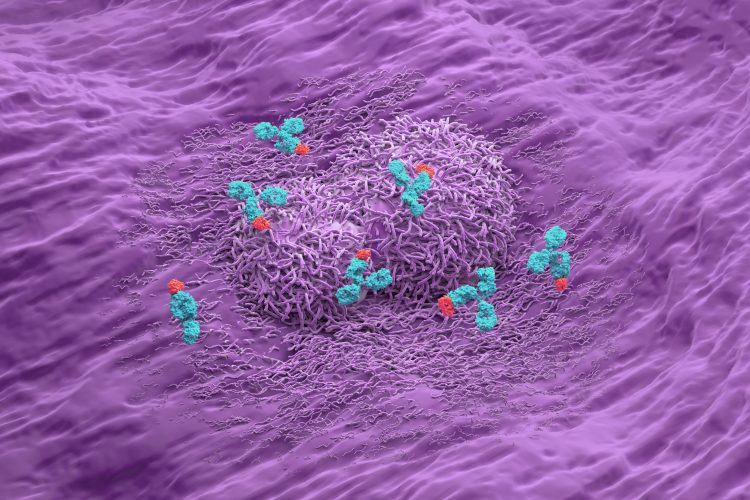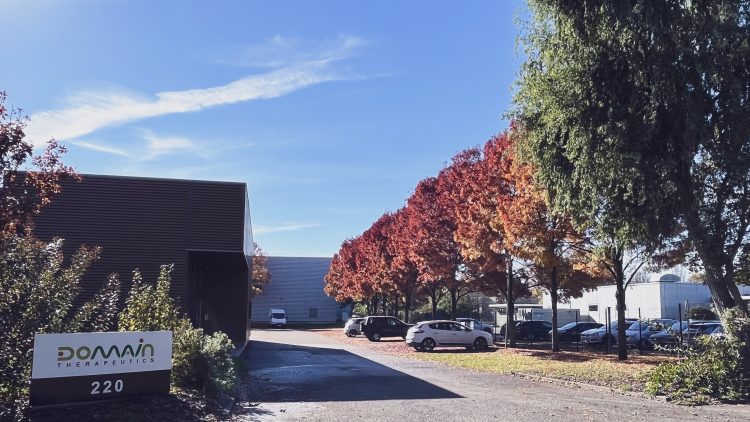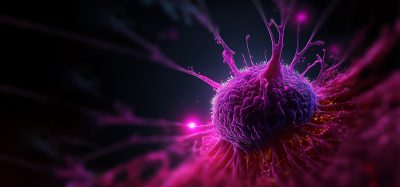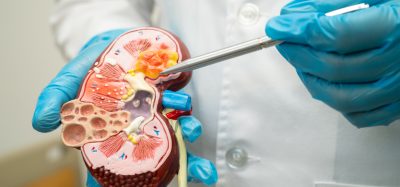Outsmarting immune suppression through GPCR innovation
Posted: 18 July 2025 | Drug Target Review | No comments yet
Immune resistance is one of cancer’s toughest tricks. By rethinking how we target GPCRs, scientists may finally have a way to modulate it with precision.


Immuno-oncology has transformed cancer treatment, but for many patients, tumours remain resistant to even the most advanced immune checkpoint inhibitors. Domain Therapeutics is addressing this challenge by focusing on G protein-coupled receptors (GPCRs) – a well-validated and the largest family of drug targets that remains underexplored in cancer and inflammation.
The company’s pipeline is built on a proprietary discovery and development approach designed to uncover previously inaccessible therapeutic opportunities. This strategy is exemplified by its flagship programme: DT-7012.
At the centre of this work is Chief Scientific Officer Stephan Schann. With over two decades of experience in biomedical research, he is leading efforts to translate breakthrough GPCR biology into differentiated therapeutic strategies that can overcome immune resistance and offer new hope to patients with limited treatment options.
Biomarkers are redefining how precision therapies are discovered, validated and delivered.
This exclusive expert-led report reveals how leading teams are using biomarker science to drive faster insights, cleaner data and more targeted treatments – from discovery to diagnostics.
Inside the report:
- How leading organisations are reshaping strategy with biomarker-led approaches
- Better tools for real-time decision-making – turning complex data into faster insights
- Global standardisation and assay sensitivity – what it takes to scale across networks
Discover how biomarker science is addressing the biggest hurdles in drug discovery, translational research and precision medicine – access your free copy today
DT-7012: targeting Tregs where it matters most
DT-7012 is Domain’s Treg depleting anti-CCR8 monoclonal antibody designed to deplete tumour-infiltrating regulatory T cells (Tregs). These CCR8+ Tregs are known to suppress immune responses in the tumour microenvironment (TME), allowing cancers to grow unchecked.
“DT-7012 is a novel, humanised, Fc-enhanced antibody designed to selectively deplete CCR8+ (Tregs) within the tumour microenvironment,” says Schann. “Through antibody-dependent cellular cytotoxicity (ADCC) and antibody-dependent cellular phagocytosis (ADCP) mechanisms, it effectively transforms the TME into a more immunocompetent state, ultimately improving antitumour immunity.”
Domain’s candidate sets itself apart from others in development by overcoming two major challenges: CCR8 receptor variability and CCL1 ligand interference.
DT-7012 binds to a wider range of CCR8 receptor forms, including those modified post-translationally, which can limit antibody recognition.
“DT-7012 binds to a wider range of CCR8 receptor forms, including those modified post-translationally, which can limit antibody recognition,” Schann explains. This broader binding capacity may offer a crucial advantage across certain tumour types and diverse immunosuppressive Treg populations, where CCR8 variability might otherwise reduce therapeutic efficacy.
Another distinguishing feature is the antibody’s performance in high-CCL1 conditions. CCL1 is the natural ligand for CCR8 and causes receptor internalisation – often undermining the efficacy of other anti-CCR8 antibodies.
“DT-7012 retains its depletion activity even in high CCL1-concentrated environments – an essential property not shared by most competitor antibodies currently in clinical development.”


Domain Therapeutics’ headquarters – where GPCR-targeted immunotherapies like DT-7012 are being developed to overcome cancer immune resistance. Image courtesy of Domain Therapeutics.
Evidence from the preclinical front line
Early studies suggest that Domain’s approach to CCR8 is not only scientifically sound but clinically meaningful. In suppressive TME models, a surrogate antibody mimicking DT-7012’s properties showed dramatic results.
“A surrogate antibody with properties akin to DT-7012 demonstrated a 100 percent complete response in immunosuppressive TME models as a preclinical monotherapy,” says Schann.
By directly targeting CCR8, a receptor specifically expressed on tumour-infiltrating Tregs, DT-7012 disrupts this immunosuppressive shield, restoring the immune system’s ability to fight the tumour.
These findings support DT-7012’s potential to address one of the biggest challenges in oncology: immune resistance in patients who do not respond to checkpoint inhibitors.
“By directly targeting CCR8, a receptor specifically expressed on tumour-infiltrating Tregs, DT-7012 disrupts this immunosuppressive shield, restoring the immune system’s ability to fight the tumour.”
The antibody continues to function in the CCL1-rich environments that characterise many solid tumours, particularly those with high Treg concentration – something that is unique to Domain.
“This depletion is essential for effective cancer immunotherapy,” he adds, “reinforcing DT-7012’s potential as a promising standalone therapeutic strategy for overcoming immune resistance and improving patient outcomes.”
Tackling resistance from a different angle: PAR2
While CCR8 is drawing attention, Domain is also exploring less conventional GPCRs like PAR2 – long known in inflammation and pain, but only recently linked to cancer therapy resistance.
“While recent advances have sparked interest in targeting PAR2 for immuno-oncology, our collaborative research with Prof John Stagg was key to uncovering its role in resistance to cancer immunotherapy, an area that had not been fully explored before,” Schann explains.
Targeting PAR2 is not simple, and its structural complexity and unique biology have made the receptor difficult to drug. However, Domain’s platform has enabled them to develop DT-9046, a biased negative allosteric modulator (NAM) that selectively adjusts PAR2 receptor activity, enabling a more refined therapeutic effect.
“This has led to the discovery of DT-9046, a PAR2 biased negative allosteric modulator, redefining the way PAR2 modulation can drive therapeutic success.”
Unlike other PAR2-targeting strategies, DT-9046 fine-tunes specific signalling pathways, potentially offering therapeutic benefits while minimising resistance risks.
“This opens the door for a disease-modifying approach both as a monotherapy and in combination, expanding treatment options and offering new hope to millions of patients.”
Designing drugs to survive the tumour
When asked about the practical challenges of drug discovery, Schann is clear: biology does not make things easy. Tumour microenvironments are acidic, crowded with competing ligands and constantly evolving to resist treatment.
“Tumours can adapt to therapeutic interventions, activating survival mechanisms to lead to functional resilience and drug resistance,” he says.
Tumours can adapt to therapeutic interventions, activating survival mechanisms to lead to functional resilience and drug resistance.
Domain’s response is to plan for those hurdles early. They subject candidates to harsh preclinical testing – mimicking the stress and competition of real tumours – to select only the most resilient compounds.
“By taking these tumour complexities into account from the earliest stages of development, we are able to advance drug candidates with greater resilience, selectivity and therapeutic durability.”
The technology behind the pipeline
Supporting this approach is bioSens-All®, Domain’s proprietary GPCR screening technology. Using bioluminescent readouts, this platform reveals how molecules modulate GPCR activity and allows researchers to monitor downstream signalling in fine detail.
“For many of our programmes, understanding and controlling pathway activation or blockade is critical for achieving efficacy,” says Schann.
With bioSens-All®, the team can determine not just whether a compound binds to a receptor, but how it changes the cell’s behaviour – data that is key to building selective, potent therapies with a good safety profile.
“The platform has a proven ability to tackle challenging GPCR targets, including orphan and intractable receptors,” Schann adds. “Whether we are working with small molecules or larger biologics, our platform enables a precise design of innovative drug candidates with highly differentiated profiles.”
Preparing for the clinic
Preclinical success is just the beginning. For DT-7012, Domain is now translating its data into clinical plans.
“The preclinical characterisation of DT-7012 has provided a strong foundation for its clinical development,” says Schann. “This knowledge will guide the strategic design and derisk its transition into Phase I/II trials to maximise success.”
That transition is supported by biomarker strategies and in-depth understanding of target pharmacology, which help optimise clinical trial design, including aspects like patient selection.
“Our integrated pipeline strategy ensures that each programme we advance is built on strong biological understanding and optimised for clinical success.”
Scientific recognition at AACR
This momentum was on full display at the AACR Annual Meeting, where Domain presented new preclinical and early clinical findings.
“Presenting our data at the AACR was an incredibly rewarding experience,” says Schann. “The discussions we had underscored the strong interest in the highly differentiated profile of our drug candidates.”
DT-7012 attracted particular attention for its Treg-depleting capabilities, while DT-9081, an EP4 receptor antagonist, sparked interest for its safety profile and promising early signals of efficacy.
Beyond specific programmes, the broader takeaway was clear: GPCRs are finally earning their place in oncology pipelines.


Stephan Schann is Chief Scientific Officer at Domain Therapeutics. As the leader of Domain’s proprietary programmes and collaborations with pharma partners, he oversees the intellectual property strategy for each of the company’s assets. Stephan has been with Domain since its inception in 2008 and his roles have evolved over time, including previous positions as Head of Research, Director of Research & Development and Vice-President of Research & Development. With over 25 years of experience in biomedical research, Stephan has dedicated his career to the development of novel therapeutics addressing unmet medical needs. His significant contributions to drug discovery and development have been instrumental in shaping Domain’s success and its continuous growth. Prior to joining Domain, Stephan established and led the Medicinal Chemistry Department at Faust Pharmaceuticals and was a senior scientist at Evotec. Stephan holds a PhD in medical chemistry from University of Strasbourg in France.
Related topics
Drug Discovery, GPCRs, Immuno-oncology, Immuno-oncology therapeutics, Monoclonal Antibody
Related conditions
Cancer, inflammation
Related organisations
Domain Therapeutics








